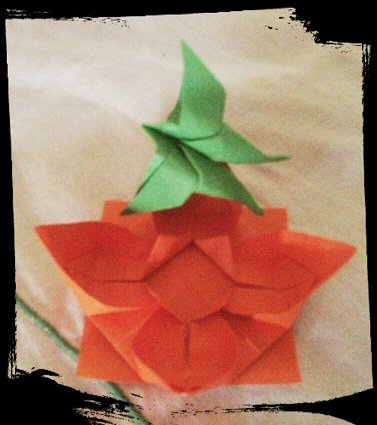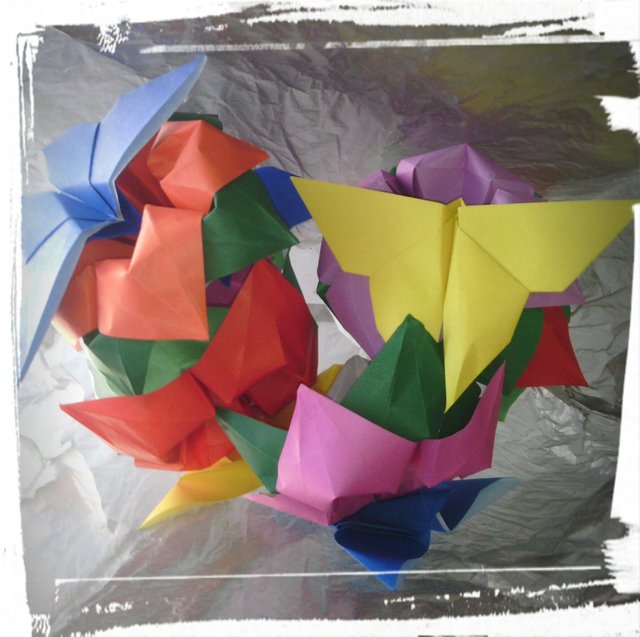Folding a pandemic situation. Origami as a didactic resource in confinement.

.-.-.-.-.-.-.-.-.-.-.-.-.-.-.-.-.-.-.-.-.-.-.-.-.-.-.-.-.-.-.-.-.-.-.-.-.-.-.-.-.-.-.-.-.-.-.-.-.-.-.-.-.-.-.-.-.-.-.-.-.-.-.-.-.-.-.-.-.-.-.-.-.-.-.-.-.-.-.-.-.-.-.-.-.-.-.-.-.-.-.-.-.-.-.-.--.-.-.-.-.-.-.-.-.-.-.-.-.-.-.-.-.-.-.-.-.-.-.-.-.-.-.-.-.-.-.-.-.-.-.-.-.-.-.-.--.-.-.-.-.-.
Before going into a topic that will take me a little less than three installments to explain the use of this art in our lives even at the level of education and its emotional repercussions to heal us from the psychological sequels that the COVID has left in many of us, it is necessary to make some history:
Origami, origami, papiroflexia, papirogrami; are some terms that are going to lead us to the same thing. The art of folding paper..., everything points to the Japanese who were the very creators of paper" (Duque2001 according to Gallo (S/D), the word Origami comes from the Japanese words "Ori" which means folded and "gami" which means paper.
For Gallo (S/D) this millenary art had its origin in the Heian period, around the years 794-118 3. In the year 1000, Murasahi Shikibu wrote "The Story of Prince Genji" where he describes the way in which love letters were folded. Another example of Origami used in those times, passed down for generations among the Shinto priestly class where the motifs and ways of putting the ribbons seem to have some meaning such as butterflies, especially the couple (male, female), which are used to close two bottles of sake at weddings.
In the Kamakuro period which covers the years 1183-1333 appear the "nochis" which symbolized luck to the warrior which were offered in the temples. Until then only the noble classes had the necessary conditions to make origami.
By the 14th century, some folds served as horoscopes and contained prayers, in zigzag ("go-Hei") and others were knotted with a "pentagonal knot".
After the end of the first Muromachi period, origami became popular and began to be passed down from father to son.
In the EDO period (1614.1868) of the 18th century, Zen Buddhism as a popular religion had a great impact on the spiritual and cultural life, the artistic folding was taught for example for the realization of letters, greetings, writings in general as well as the noshis. In 1797 Origami representations are evidenced in the book "Chushigura Orikata" whose author is believed to be a priest. In this book figures folded for the work appear and it was the first of its kind. In that year the same priest wrote "Sembaraza Orikata" in which the folding of the crane in 1000 forms is treated. Between 1845 and 1850 the collection of foldings entitled "Kaan no mado", presumably by "adachi katsuyaki", appeared; we could say that the models it contains are really interesting: male and female butterflies, frogs, dragonflies etc.
Later on, the German pedagogue Frobel, used origami as a technique to teach in Kindergarten. This influenced the West, for example the book "Hindu Sundara Row Geometric exercises in paper folding" of 1893 or the works of Essteven Barr Kodi-Husimi and Jaques Justin "Pliage eletmathematques" (mathematical folds) which give importance to origami to teach certain mathematical and geometrical subjects. On the other hand, Rey Pastor and Unamuno mention the technique of the pentagonal knot to obtain a pentagon.
By the XIX century, specifically between the years 1900-1960, the great masters of modern origami and others with the need to create origami emerged, among whom we can mention Lilian Oppen Heimer, Dr. Vicente Solórzano Sagredo (who founded the Origami Museum in Argentina in 1954 and was closed in 1961), Ligia Montoya and Adolfo Cercedo. Both from Argentina. Vicente Palacios Montroll, Nakano N. Elias and others.
Mankind has always been provided with material to fold in an artistic way such as braided reed, ancient Greek garments and in Europe the folding of napkins using the form that could be considered "bases" for the Origamoi and that were not yet known; in this order of ideas we could mention the zigzag, flat folds, blintz and water pumps and we can refer to the book by Mattyía Gieghen, entitled "Tratado delle Pliegatture" of 1969 where you can find the folds for folding napkins.
According to Robert Harbin in his book "Magic Paper, the art of folding paper" of 1965 (7th edition), he mentions that between the years 1704 and 179 instruction books appear but the most complete was one of 1795 where a great number of folding bases are mentioned. In 1985 the bird and frog bases were known in Europe. The first publication that makes mention of these basic folds was the English magazine "The Boys Ower Paper", in volume VIII of 1886, but in 1952 appear the graphic representations differentiating the mountain and valley folds that Yoshizawa devised and then Randlllett and Harbin analyzed it, in that way appears the idea of the "bases" to exercise diverse folds among these we can mention the valley, mountain, step, rabbit's ear, Crushed, petal, Sink, kite, bomb, water, bird and frog.

.-.-.-.-.-.-.-.-.-.-.-.-.-.-.-.-.-.-.-.-.-.-.-.-.-.-.-.-.-.-.-.-.-.-.-.-.-.-.-.-.-.-.-.-.-.-.-.-.-.-.-.-.-.-.-.-.-.-.-.-.-.-.-.-.-.-.-.-.-.-.-.-.-.-.-.-.-.-.-.-.-.-.-.-.-.-.-.-.-.-.-.-.-.-.-.--.-.-.-.-.-.-.-.-.-.-.-.-.-.-.-.-.-.-.-.-.-.-.-.-.-.-.-.-.-.-.-.-.-.-.-.-.-.-.-.--.-.-.-.-.-.
Thank you, dear STEEMERS, for coming so far. If you liked the content support me with your vote and give your opinion on the topic I show in this article. See you next time.
Glad to hear and learn something new today. Origami the act of folding paper . First time I will be hearing about this though
Thanks for the support. This topic has three parts. This is just the introduction. In the other part I begin to delve into the educational issue and its implications with origami.
I invite you to see it when I publish it. Successes